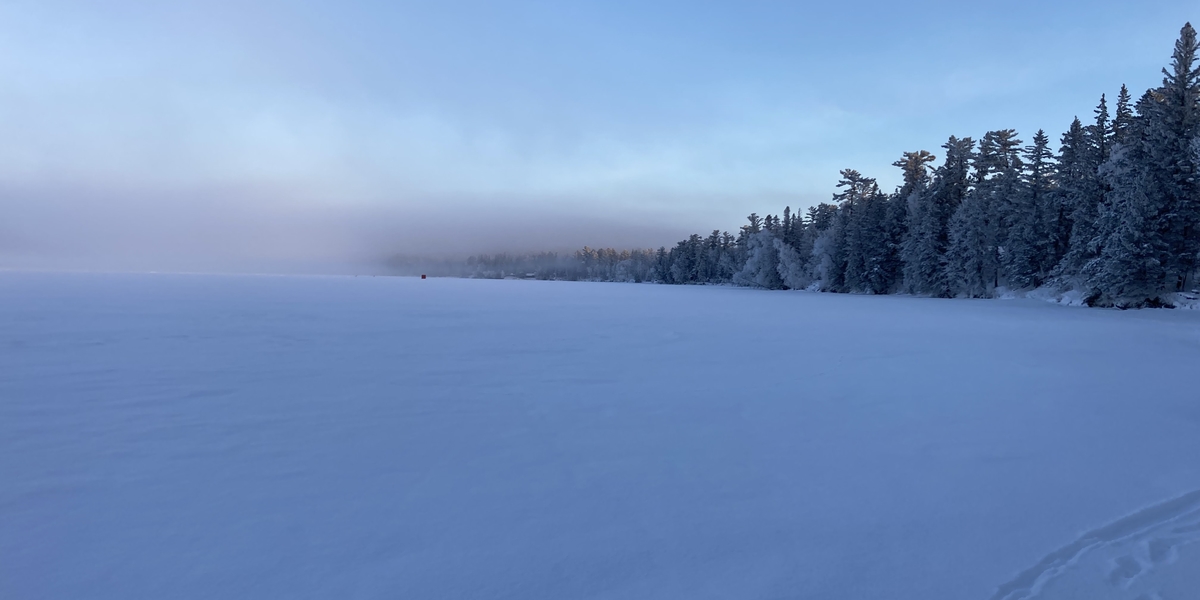
The station is peaceful. Both IBSL and the park have much less activity in the winter. With the blankets of snow, staying at the station can feel very cozy. It is almost as if the station is resting, so that it's ready to take care of us all summer.
There’s a long history of winter research at Itasca. Winter is a time to collect lake sediment cores for paleolimnology reconstructions. In the past, an annual beaver lodge census was also conducted during our coldest season. Researchers visited in the winter for limnology and small-mammal research. An important long-term dataset developed by station staff is a record extending to the late 1980s of the date of ice in and ice out on 10 lakes and ponds in Itasca State Park. This generally leads to a lot of discussion among station staff about ice conditions throughout the winter.
The season is ideal for some types of fieldwork. Though Wilderness Drive and the South Entrance Road are both closed in the winter, other areas in the park become more accessible! If the snow is deep, snowshoes make it possible to traverse the forest. If there is little snow early in the winter, you can walk across the frozen lakes to shores that would require a boat to reach during the summer. It becomes much easier to see and walk through the forest when the vegetation is dormant and there is no snow.
Visitors get to see Itasca at a time when most visitors do not. Season change is one of Minnesota's greatest features and seeing familiar places during different seasons can be fun. Plus, no need to plan for bugs or poison ivy in the winter!